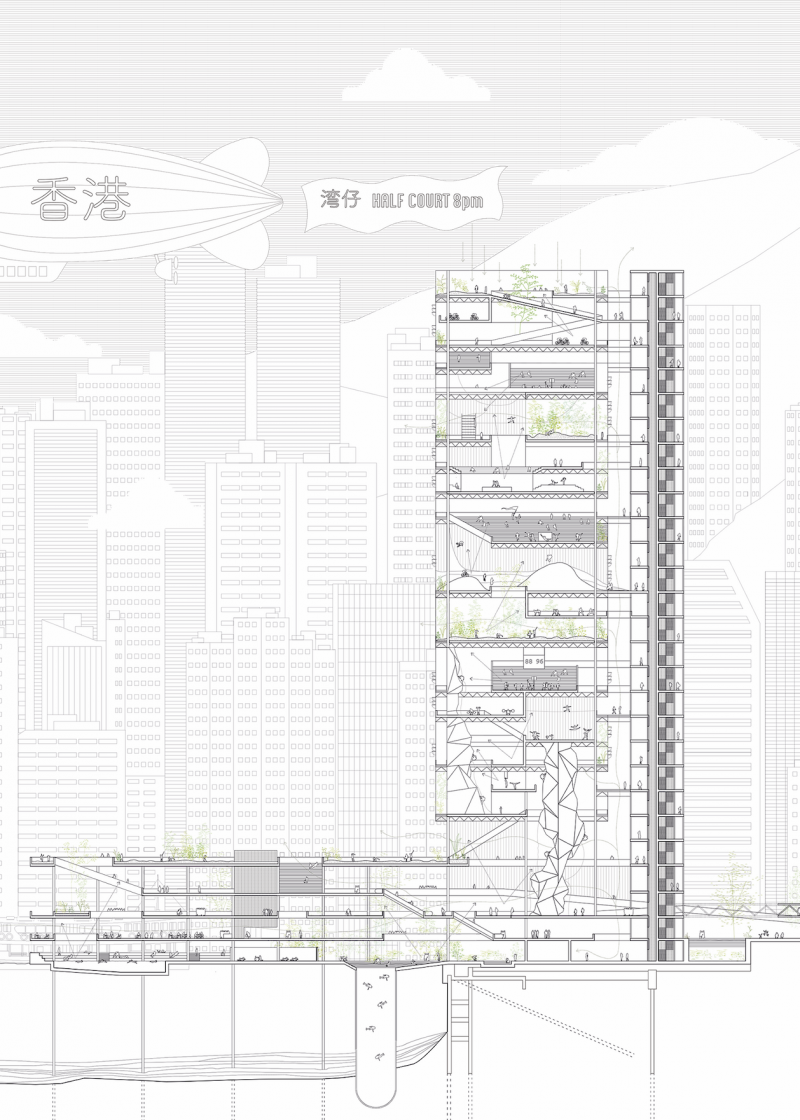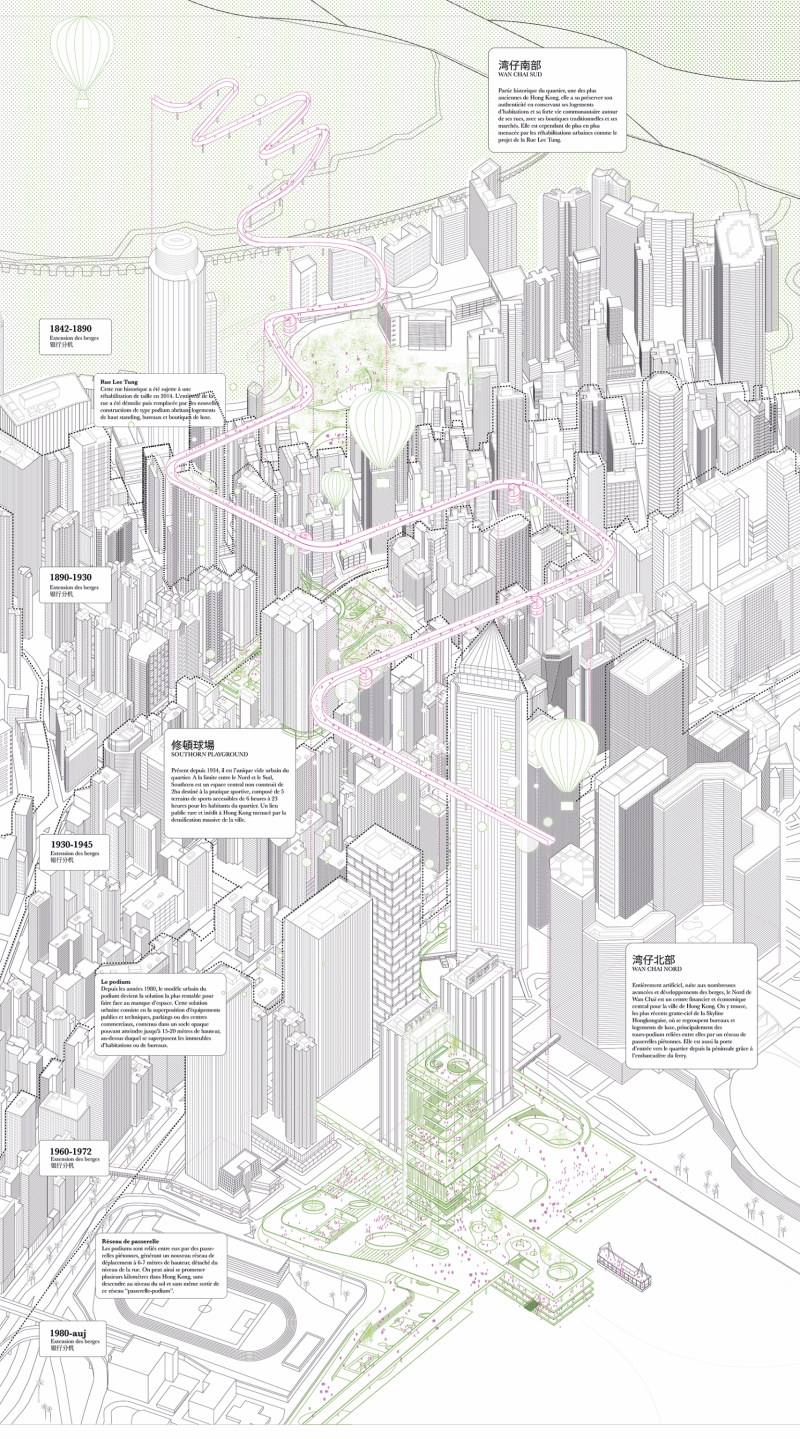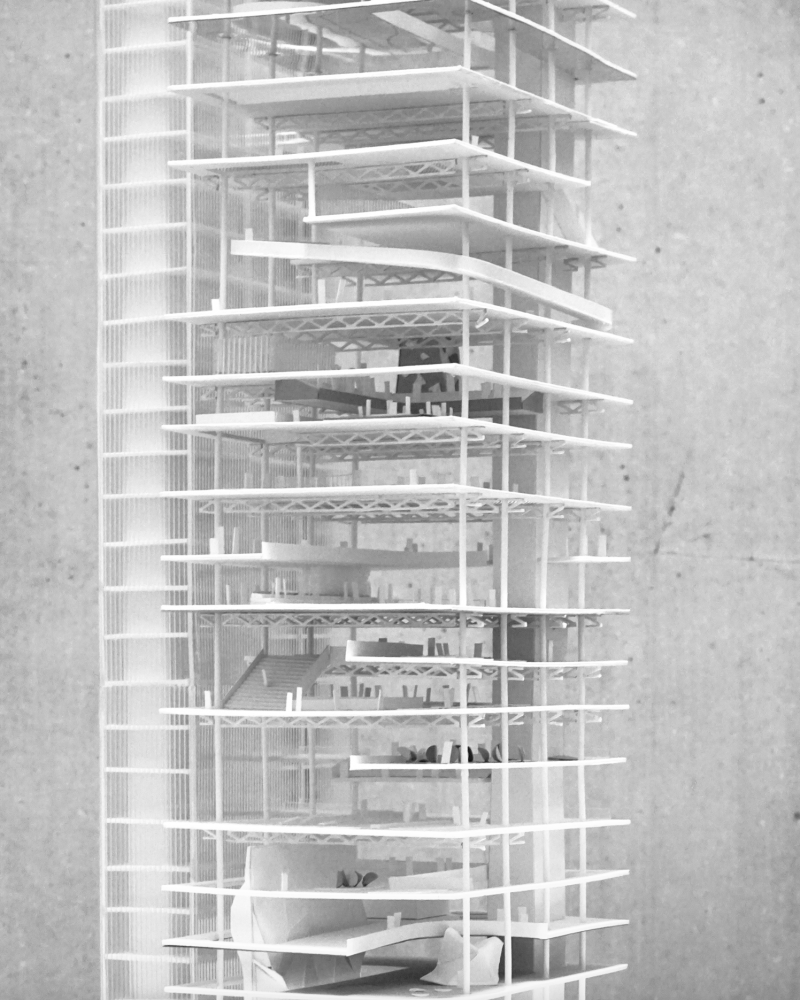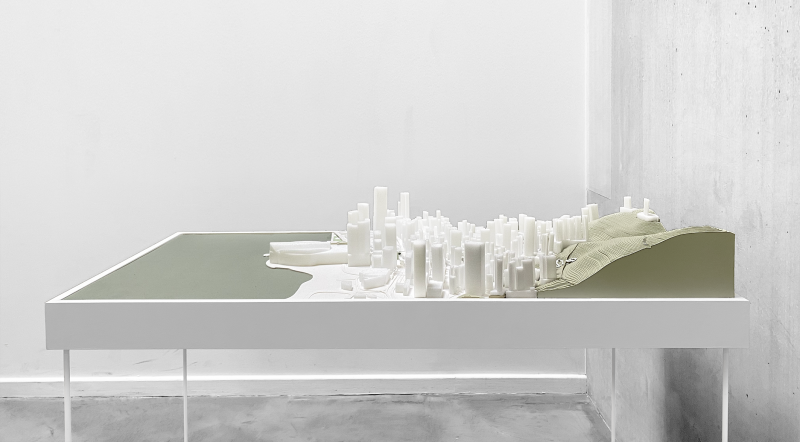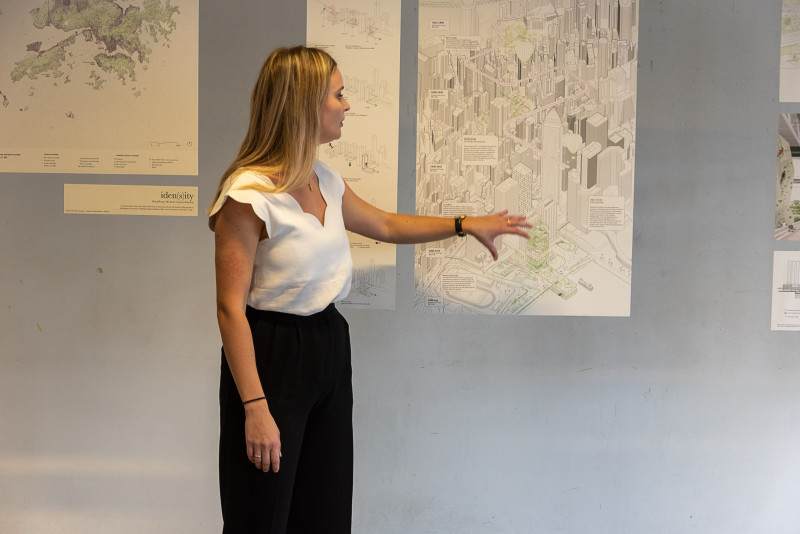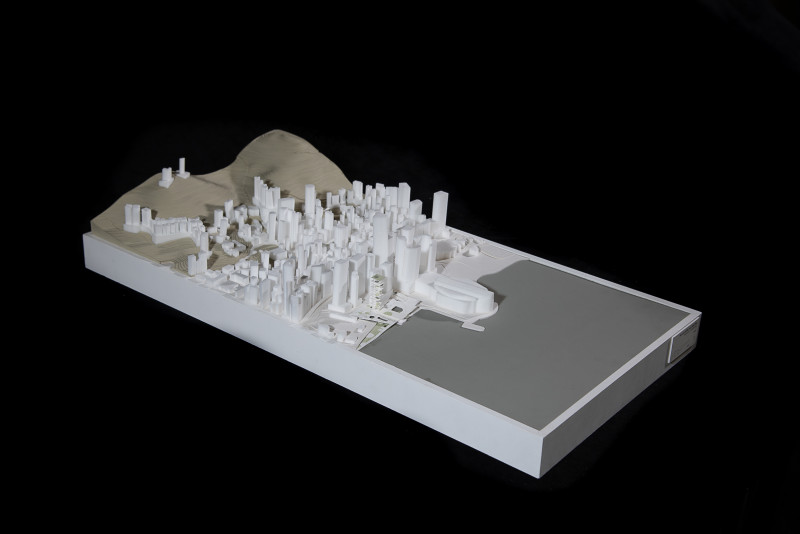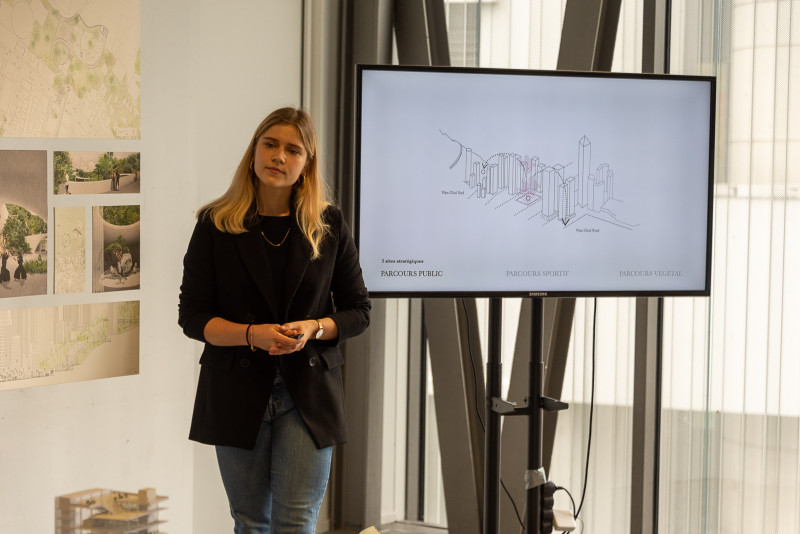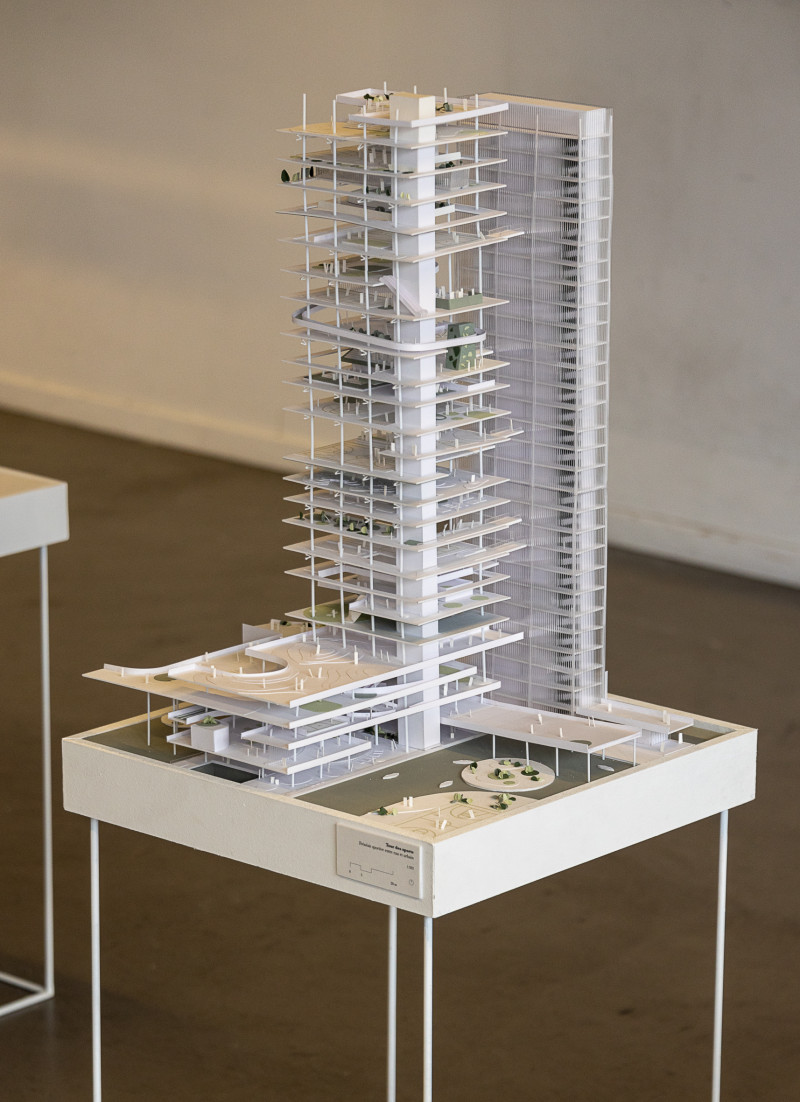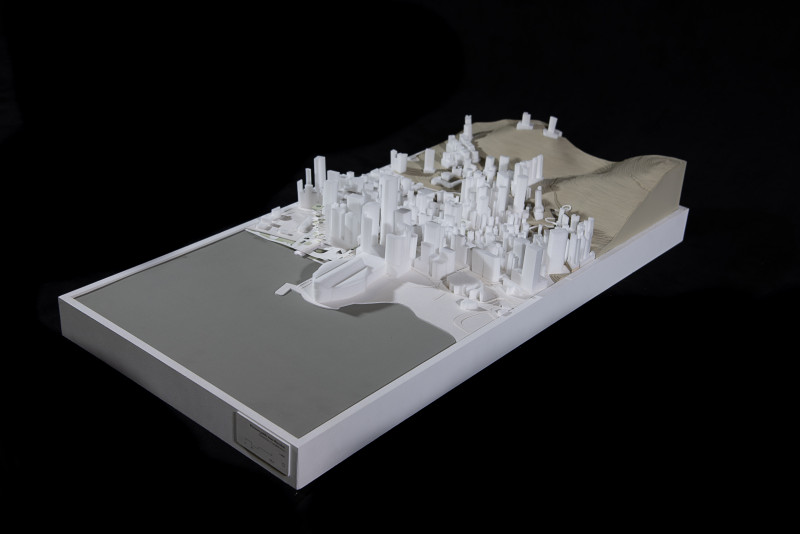Iden(s)ity. Hong Kong, Dense City losing its Identity
Limited by its geographical location between the sea and the mountains, Hong Kong is one of the densest cities in the world, unable to continue to expand spatially, to further develop. Since 1980, the podium principle has become the main tool to remedy the lack of space. It generates, by its size and opacity, a disappearance of public space and street practices, which are so characteristic of Asian cities. The historic district of Wan Chai illustrates the problems of this generic urbanism, leading to a clear horizontal segregation between its northern (economic) and southern (community) parts. The South is thus exposed to gentrification and the progressive loss of its identity.
With the objective of preserving identity, amplifying the program and reinterpreting a problematic urban principle, the project considers the neighborhood in its transversality, proposing a new way of reinvesting it through a public, sports and landscape path, between the sea and the mountains. It is materialized by a pedestrian bridge, becoming the narrative support of a sporty and playful scenario going from the urban frenzy, representative of Hong-Kong, to the rediscovery of oneself. Amplified in 3 points, the footbridge thickens and expands in its verticality and horizontality. Thus the public base of the podium is no longer thought as a strict and opaque architecture, but rather as a flexible and fine expanse that does not hinder movement.




